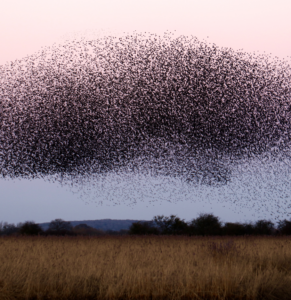Age of avatars
“In the near future, you’ll be able to send your avatars to work, perhaps do multiple jobs at the same time,” she says.
Not surprisingly, Faith is excited as she discusses AI and the future. “This communication we are now having over a Zoom call,” she says, leaning forward to the camera with a smile, “this will go up a few notches. I might be able to reach out and virtually shake your hand. I could get a scent of the cologne you are using, I am using…”
She then takes it to the next level.
“Thoughts,” says the trend-spotter, “will replace verbal communication and telepathic teams will become common.”
Faith is not treading sci-fi territory: University of California in San Francisco scientists have already shown they can translate brain signals into complete sentences with nearly 97 per cent accuracy – better than professional speech transcription.
Neuralink, a neurotechnology company founded by Elon Musk and others, is already working on brain interface devices that will help people with paralysis to communicate. “Brain-to-brain communication without speech is already possible and Elon Musk says in the future, you may be able to record and re-live every moment of your life,” she says, clearly excited about the future.
Is there a flip side to these massive disruptions? I ask.
“With face-to-face interaction disappearing and the [number] of robo-employees growing as the human workforce begins to shrink, new issues could begin to raise their heads,” she feels. The role of managers will change – they will monitor not just productivity but also rely on emo-surveillance tools like face- , heart- and pulse-reading sensors to gauge the mood of workers. An upset worker will be offered counselling in real time.
Staff will be pampered and protected well, she adds, highlighting how Facebook recently paid out $52 million to moderators who developed PTSD over the disturbing, violent content they had to monitor.
Does she have a few tips for managers or marketers to spot key trends and incorporate them in their business plans?
I can suggest at least five, she says, readily.
1. Immerse yourself in other POVs – sites you don’t usually visit. If you’re male, look at Amy Poehler’s Smart Girls and Refinery29. If you’re white, read Blavity and AphroChic.
2. Cultivate your own Talent Bank. Ours has 10,000 Global Futurists but you can create your own. Contact intriguing speakers, authors, academics, anyone who has an area of expertise and ask for a bit of their time to chat.
3. Tap colleagues from different arenas to solve a problem or create new ideas. Bring in thinkers of different ages, disciplines, talents, lifestyles to better represent your diverse consumer.
4. Immerse yourself in reading about the future. In addition to my website, FaithPopcorn.com, there are great forums on Reddit – there’s Wired magazine, MIT Tech Review, Futurism.com. Look for patterns… where new needs are emerging.
5. Don’t overthink it. Act! Culture is changing fast. If you hesitate to figure out supply-chain issues, a startup will beat you to it. Find ways around entrenched thinking – can you create an incubator; can you acquire a related business; can you outsource?
Personalisation will only keep growing – and businesses should be prepared to take it to the next level. She offers the example of Jaguar Land Rover working with AI to improve the driving experience. Cabin setting change based on the driver’s facial expressions. Ambient lighting and cabin colours would change to reduce the driver’s stress levels and a favourite playlist will start playing. Temperature would be lowered in response to yawning or other signs of tiredness.
As we come to the end of the interview, I ask her if any of her predictions have not occurred as yet?
“Yes,” she says. “For women to achieve true equality – and even surpass men. It’s coming, but it’s taking forever.”




